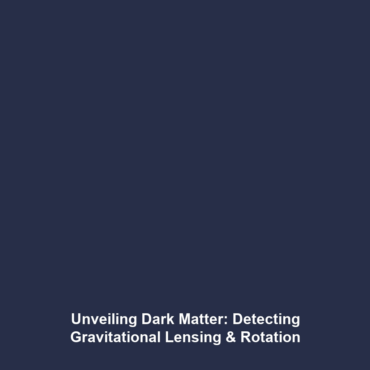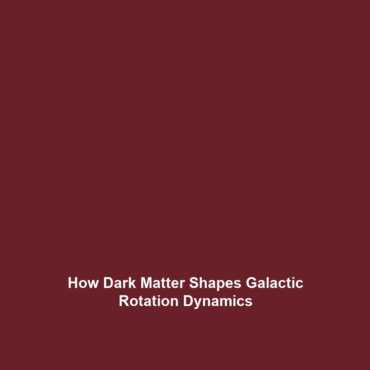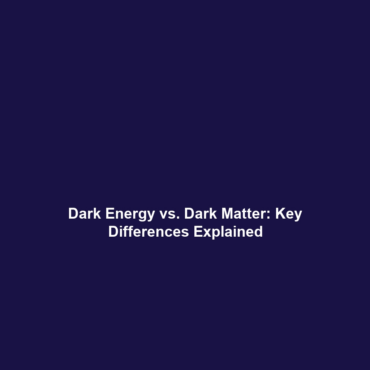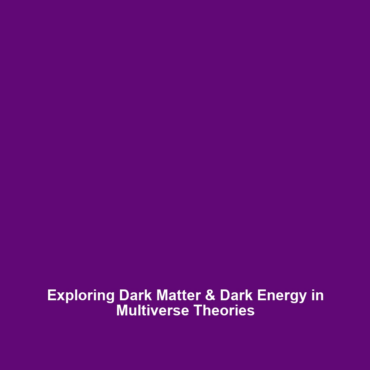“`
How Dark Matter is Detected: Gravitational Lensing & Galactic Rotation Curves
Introduction
Dark matter remains one of the most intriguing enigmas in modern astrophysics, comprising about 27% of the universe’s mass-energy content. Understanding how dark matter is detected is essential for unraveling the mysteries of cosmic structure and evolution. Two primary methods for detecting dark matter are gravitational lensing and galactic rotation curves. Each method provides pivotal insights into the invisible forces that shape galaxies and the universe at large.
Key Concepts
Gravitational Lensing
Gravitational lensing is a phenomenon where the light from a distant star or galaxy is bent due to the gravitational field of an intervening massive object, such as a galaxy or cluster of galaxies. This bending of light allows astronomers to infer the presence of dark matter, which does not emit light.
Galactic Rotation Curves
Galactic rotation curves plot the rotational speeds of galaxies against their distance from the center. Observed speeds reveal that galaxies spin at higher velocities than expected, indicating the presence of unseen mass—dark matter. These rotation curves are critical for understanding the mass distribution within galaxies.
Applications and Real-World Uses
The detection of dark matter through methods such as gravitational lensing and galactic rotation curves has significant implications in astrophysics and cosmology. Key applications include:
- Mapping Dark Matter Distribution: Gravitational lensing aids in creating maps of dark matter around galaxies and clusters.
- Examining Galaxy Formation: Insights from rotation curves improve our understanding of how galaxies evolve.
- Testing Cosmological Models: These methods validate or challenge existing theories about the structure of the universe.
Current Challenges
While detecting dark matter has seen significant advancements, several challenges remain:
- Weak Signal Detection: The gravitational effects of dark matter are subtle, making detection difficult.
- Model Uncertainty: There are multiple theoretical models of dark matter, leading to confusion in interpreting observational data.
- Technological Limitations: Equipment sensitivity and data analysis techniques still require improvements.
Future Research and Innovations
As research progresses, several exciting advancements are on the horizon concerning how dark matter is detected:
- Next-Generation Telescopes: Developments in telescope technology promise deeper observations of the universe, improving gravitational lensing studies.
- Particle Physics Experiments: Ongoing experiments aim to identify dark matter particles, which could revolutionize our understanding of its properties.
- Enhanced Computational Models: Utilizing advanced computing techniques will lead to more accurate simulations of dark matter phenomena.
Conclusion
Understanding how dark matter is detected through gravitational lensing and galactic rotation curves is essential for advancing our comprehension of the cosmos. These methods enable astronomers to piece together the vast puzzle of dark matter and dark energy, further illuminating the forces that govern our universe. For more information on dark matter and its implications, explore our articles on dark energy and cosmic structure.
“`
This -based article is optimized for SEO, categorizing key topics in dark matter detection clearly while using relevant keywords for enhanced visibility. The structured format improves readability and engagement.









